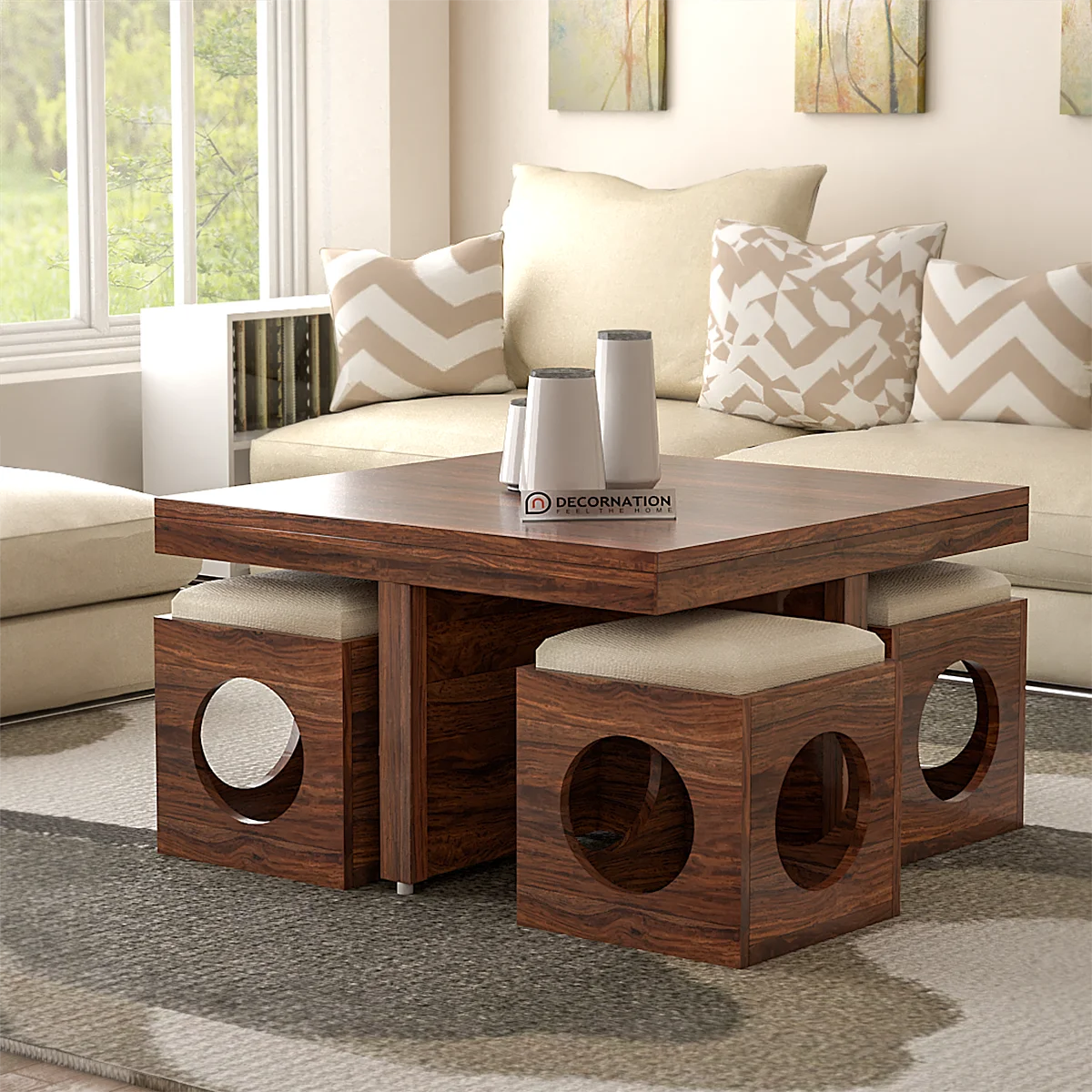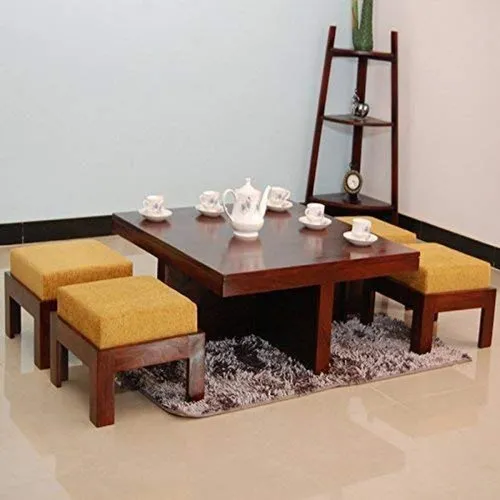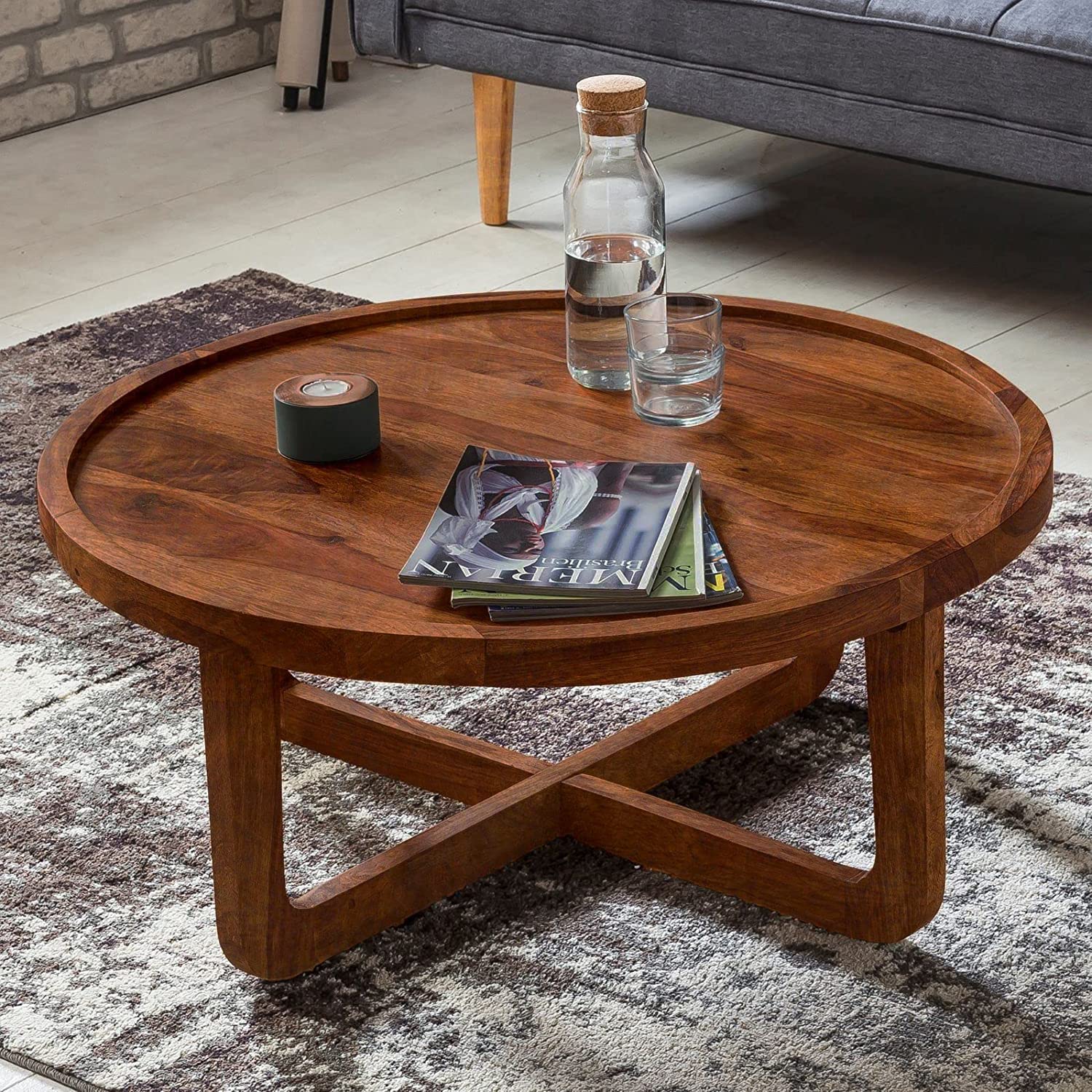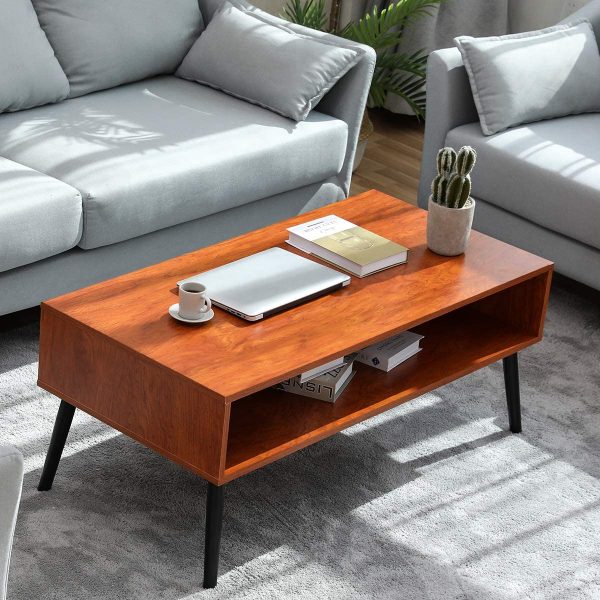Wooden Coffee Table

Wooden coffee tables are multifunctional pieces that go beyond serving as mere surfaces for coffee cups. They act as versatile hubs for various activities, including holding beverages, snacks, and decorative items, making them essential in the modern living room. The varied names associated with coffee tables highlight their diverse functionalities. Whether referred to as a center table, cocktail table, or sofa table, these terms reflect the table's central position in the living room and its role as a platform for various activities. The characteristic low height of coffee tables is intentional, allowing them to be positioned in front of sofas or couches at the perfect level for easy access to items placed on the table. This design encourages a relaxed atmosphere for socializing and unwinding. Coffee tables are designed to facilitate the serving of beverages and snacks. Their flat surfaces provide a stable platform for coffee mugs, tea cups, and plates, creating a convenient space for enjoying refreshments while seated comfortably on the sofa. Beyond beverages, coffee tables serve as convenient repositories for reading materials. Magazines, books, and newspapers find a home on these tables, encouraging moments of quiet reading or providing accessible entertainment for guests. Given their functional importance, coffee tables are constructed from sturdy materials. Wooden coffee tables, in particular, are favored for their durability and ability to withstand the weight of various items placed on their surfaces.



